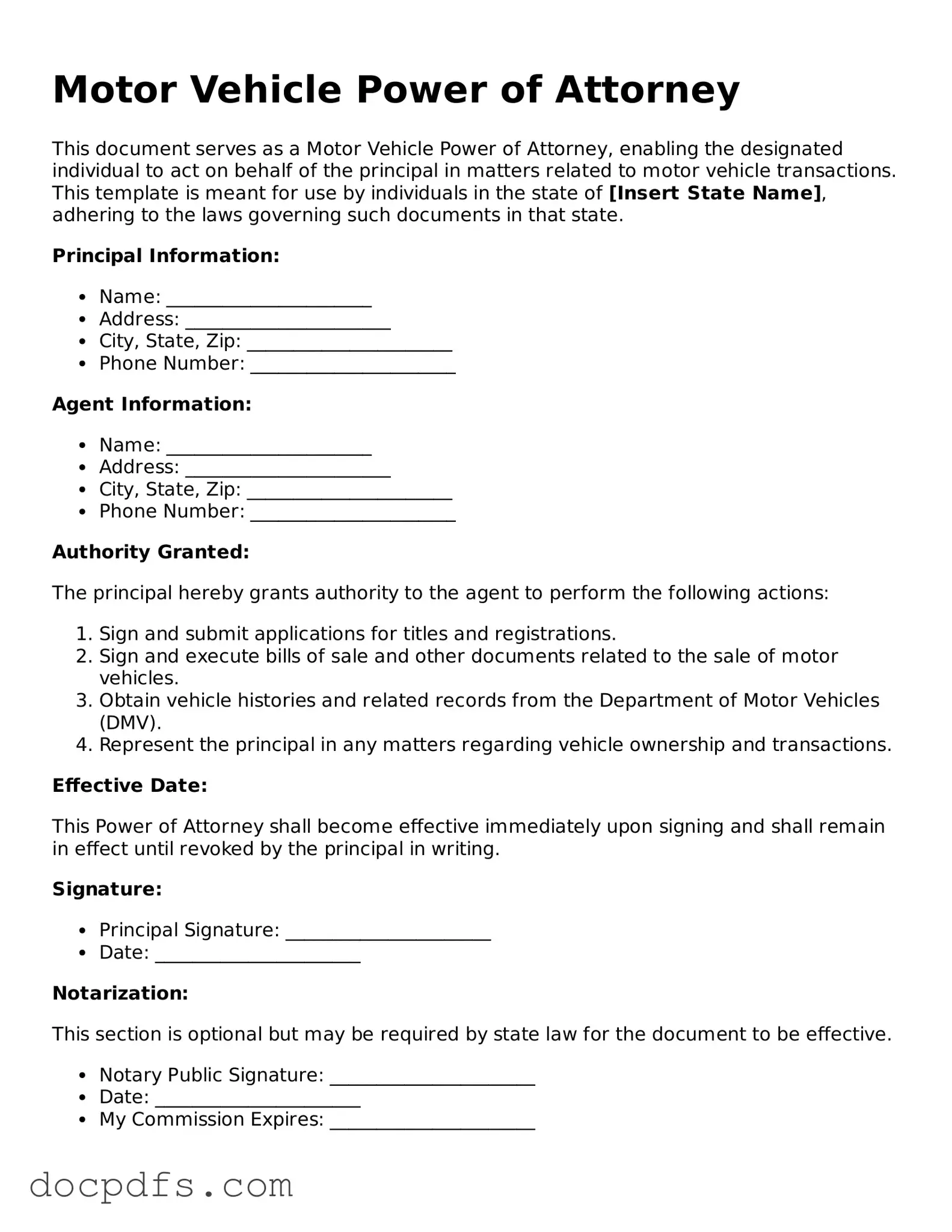The Motor Vehicle Power of Attorney form serves as a vital legal document that empowers an individual, known as the agent, to act on behalf of another person, referred to as the principal, in matters related to motor vehicle transactions. This form can be particularly useful in situations where the principal is unable to attend to these matters personally due to various reasons, such as illness, travel, or other commitments. By utilizing this form, the principal grants the agent the authority to perform specific tasks, including but not limited to registering a vehicle, signing title documents, and obtaining necessary permits. It is essential for the principal to clearly outline the scope of authority granted to the agent, ensuring that the agent's powers are both appropriate and limited to the tasks at hand. Additionally, the form typically requires the signatures of both the principal and the agent, along with any necessary witnesses or notarization, depending on state requirements. Understanding the implications of this form can help individuals navigate the complexities of vehicle ownership and transfer, ultimately facilitating smoother transactions while safeguarding the interests of all parties involved.
